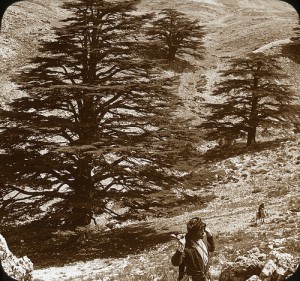- Executive Director of CBD perpetuates myth that we have lost 75% of crop diversity, at high-level meeting, no less.
- 670 agroforestry trees in a database, courtesy of ICRAF.
- Last Rice Today of this year, the 50th anniversary of the International Rice Research Institute (IRRI), summarized.
- Soil community helps maintain species and genetic diversity.
- Good news for some UK bumblebees.
- On the agricultural frontier in South America. Any crop wild relatives there?
- Global Network of National Geoparks expands. Any crop wild relatives there?
Nibbles: ABS, Climate change and crops, Beer proteome, Cattle SNPs, Nepal genebank, Sceletium tortuosum, CBD, Weeds, Vitamin A
- Indian academics voice some reservations about CBD ABS regime. Maybe a multilateral approach would be better?
- CIAT warns about climate change effect on crops. Kenyan farmers know all about that. And Koreans too. Oh, and speaking of kimchi…
- Beer proteome means better beer. Fundamental research indeed.
- Cattle breeds are real. And the gaur?
- Nepal inaugurates genebank.
- San benefit from bioprospecting license for medicinal plant.
- Ahmed Djoghlaf says…
- Weeds? Not weeds. Cities as biodiversity hotspots? Oh I give up.
- Orange cassava due to one amino acid.
Protected areas and crop wild relatives: opportunity or dead loss?
Just wanted to point out to everyone that the biodiversity vs agriculture conflict is being played out in the comments to a recent post of ours.
Danny says:
I can’t help but feel we, the agricultural biodiversity community, have failed to tap into the ‘spirit of Nagoya’, and that this has happened in the International Year of Biodiversity (IYB) may well represent a real missed opportunity.
Dave sees that and raises him:
…the only reason the conservationists want agricultural biodiversity is to document key wild relatives in reserves to prop up justifications for the failing system of protected areas.
Jump in, the water’s fine!
Cowpeas make the news
On the occasion of the World Cowpea Conference 2010 in Dakar, which is going on now and has resulted in some press interest, IITA have published an interview with the manager of their genebank. Which of course maintains the world’s largest cowpea collection on behalf of us all. Many of the points she makes are addressed in the global strategy for conservation and use of cowpea genetic resources, which I believe she’ll be presenting in Dakar. Dominique doesn’t mention core collections, but another IITA article does. We even have the results of a gap analysis for wild Vigna in Africa. And finally, also doing the rounds is a summary of the results of a survey of users of the collection. Though I wouldn’t bet the farm on those cost numbers turning out to be accurate. Do we have any readers in Dakar who’d like to tell us what’s going on?
Mediterranean hotspots get Nagoya love
It must be the spirit of Nagoya, because following the announcement of publication of a list of threatened plant species from IUCN and Kew, there’s news of a major conservation effort, this one focusing on the Mediterranean.
The areas targeted look to me like they might well have quite a few crop wild relatives. 1
• Southwest Balkans
• Mountains, Plateaus and Wetlands of Algerian Tell and Tunisia
• Atlas Mountains
• Taurus Mountains
• Cyrenaican Peninsula and
• Orontes Valley and Lebanon Mountains 2
There’s more information on the project, including an ” ecosystem profile” and a call for proposals, on the website of the Critical Ecosystem Partnership Fund.
